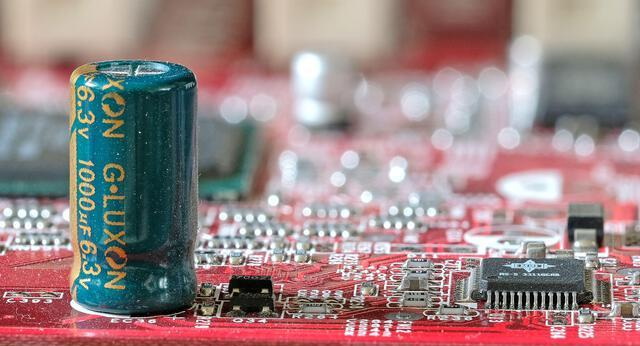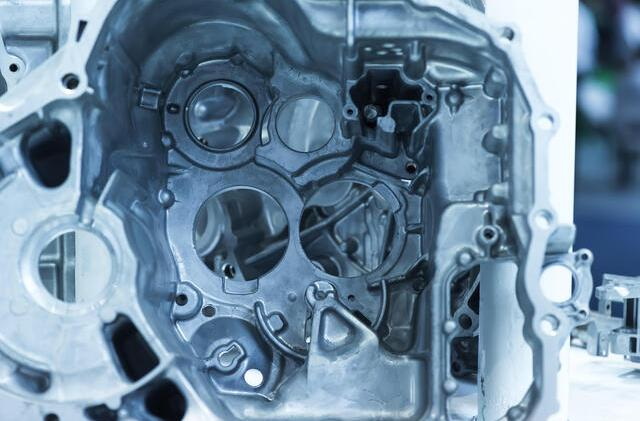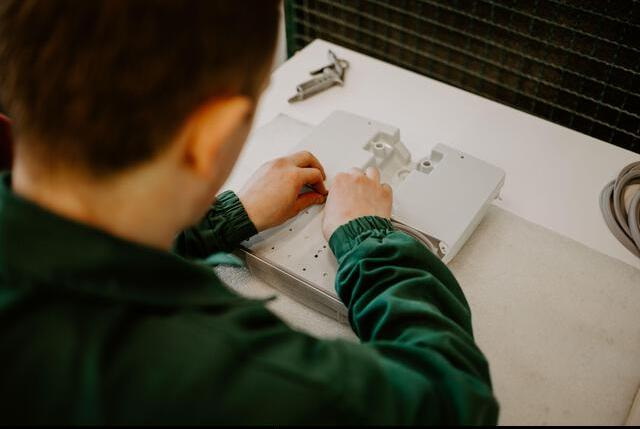Content Menu
● Understanding SMT PCB Stencils
● Key Factors Affecting SMT PCB Stencil Design
>> 1. PCB Layout and Component Density
>> 2. Stencil Thickness
>> 3. Aperture Design and Size
>> 4. Material Selection
>> 5. Type of SMT Stencil
>> 6. Printing Method Compatibility
>> 7. Solder Paste Volume Requirements
● Additional Design Considerations
>> Aperture Area Ratio
>> Alignment and Registration
>> Surface Finish and Coatings
>> Cleaning and Maintenance
● Conclusion
● FAQ
>> 1. What is the role of an SMT PCB stencil in the assembly process?
>> 2. How does stencil thickness affect solder paste application?
>> 3. What materials are commonly used to make SMT PCB stencils?
>> 2. What is a step stencil, and when is it used?
>> 1. How important is aperture design in SMT stencil performance?
● Citations:
Surface Mount Technology (SMT) PCB stencils are indispensable tools in modern electronics manufacturing, playing a critical role in the solder paste application process during PCB assembly. The design of an SMT PCB stencil directly impacts the quality, reliability, and efficiency of the entire surface mount assembly process. This article explores the various factors that influence the design of SMT PCB stencils, highlighting how these factors contribute to achieving optimal solder paste deposition and high-quality SMT assembly.

Understanding SMT PCB Stencils
An SMT PCB stencil is a thin metal sheet, usually made of stainless steel or nickel, with precisely laser-cut apertures that correspond to the solder pads on a PCB. During the assembly process, solder paste is applied through these apertures onto the PCB pads, enabling components to be mounted and soldered accurately[1][5].
The stencil's design—aperture size, shape, thickness, and material—determines the volume and consistency of solder paste deposited, which is crucial for forming reliable solder joints and preventing defects such as bridging, insufficient solder, or tombstoning.
Key Factors Affecting SMT PCB Stencil Design
1. PCB Layout and Component Density
The layout of the PCB is the primary driver of stencil design. High component density and fine-pitch components require precise aperture sizing and stencil thickness to ensure proper solder paste volume without causing solder bridging or insufficient solder[7].
- Fine-pitch components (e.g., 0.5mm or smaller pitch) require smaller apertures and thinner stencil foils (typically 0.05mm to 0.1mm) to avoid excess solder paste[3][7].
- Larger components with bigger pads can use thicker stencils (up to 0.2mm) to deposit more solder paste for robust joints[1][3].
The presence of mixed component sizes on a single PCB may necessitate step stencils—stencils with locally varying thicknesses—to accommodate different solder paste volume requirements[7].
2. Stencil Thickness
Stencil thickness is a critical factor that controls the amount of solder paste deposited. The thickness is selected based on the size and pitch of components on the PCB:
- Thinner stencils (0.05mm to 0.1mm) are used for fine-pitch components to reduce solder volume and prevent bridging.
- Thicker stencils (0.12mm to 0.2mm) are suitable for larger pads requiring more solder paste[3][5].
Adjusting stencil thickness is a cost-effective way to control solder paste volume without modifying aperture sizes.
3. Aperture Design and Size
The apertures in the stencil must precisely match the PCB pads' size and shape. The aperture size affects solder paste volume and print quality:
- For standard pitch components, a 1:1 ratio of aperture to pad size is typical.
- For larger components, aperture openings are often increased by 10-20% to deposit more solder paste.
- For very fine-pitch components (e.g., 0.5mm pitch), aperture openings may be reduced by about 10% to prevent solder bridging[3][2].
The shape of apertures (rectangular, circular, or trapezoidal) can also influence paste release and print quality.
4. Material Selection
Most SMT PCB stencils are made from stainless steel due to its durability, heat resistance, and ability to maintain tight thickness tolerances. Alternatives include nickel and brass, but stainless steel remains the industry standard[5][7].
High-performance stencils may use fine grain stainless steel, which offers smoother aperture walls and enhanced print quality[7].
5. Type of SMT Stencil
There are several types of SMT stencils, each suited for different assembly environments:
- Framed stencils have a permanent frame that maintains tension and alignment during printing, suitable for manual or semi-automated processes[4].
- Frameless stencils are used with tensioning systems in fully automated SMT lines, offering flexibility and ease of handling[4].
- Step stencils have locally varied thicknesses to accommodate mixed component sizes or complex PCB topographies[7].
Choosing the right stencil type depends on the manufacturing setup and PCB complexity.
6. Printing Method Compatibility
The stencil design must be compatible with the solder paste printing method used, whether manual, semi-automatic, or fully automated. This affects stencil size, frame design, and tensioning requirements to ensure consistent paste application[1][4].
7. Solder Paste Volume Requirements
The amount of solder paste needed depends on component type and pad size. Stencil design must optimize aperture size and stencil thickness to achieve the desired solder paste volume, ensuring reliable solder joints without defects[1][3].

Additional Design Considerations
Aperture Area Ratio
The area ratio (ratio of aperture opening area to aperture wall area) is a critical parameter for print quality. A minimum area ratio of about 0.66 is recommended to ensure proper paste release from the stencil[7].
Alignment and Registration
The stencil must be designed with precise alignment features and margins to ensure accurate registration with the PCB during printing, minimizing misalignment defects[1].
Surface Finish and Coatings
Some stencils include anti-stick coatings or electropolishing to improve solder paste release and reduce paste buildup, enhancing print consistency and stencil lifespan[7].
Cleaning and Maintenance
Stencil design should consider ease of cleaning and durability for repeated use, especially in high-volume production environments[6].
Conclusion
The design of an SMT PCB stencil is a multifaceted process influenced by PCB layout, component size and density, stencil thickness, aperture design, material choice, and manufacturing methods. Optimizing these factors ensures precise solder paste deposition, which is critical for achieving high-quality, reliable SMT assemblies. Careful stencil design reduces defects, improves yield, and enhances overall production efficiency. Manufacturers must collaborate closely with stencil suppliers and consider all these factors early in the PCB design phase to maximize assembly performance and minimize costs.

FAQ
1. What is the role of an SMT PCB stencil in the assembly process?
An SMT PCB stencil is used to apply solder paste accurately onto PCB pads during surface mount assembly. It ensures the correct amount of solder paste is deposited in precise locations to facilitate reliable solder joints[1][5].
2. How does stencil thickness affect solder paste application?
Stencil thickness determines the volume of solder paste deposited. Thinner stencils are used for fine-pitch components to reduce solder volume, while thicker stencils are used for larger pads requiring more solder paste[3][7].
3. What materials are commonly used to make SMT PCB stencils?
The most common material is stainless steel due to its durability and heat resistance. Nickel and brass are also used but less frequently. Fine grain stainless steel offers superior print quality for high-precision applications[5][7].
2. What is a step stencil, and when is it used?
A step stencil has locally varied thicknesses to accommodate different solder paste volume requirements on the same PCB, especially when both fine-pitch and large components are present[7].
1. How important is aperture design in SMT stencil performance?
Aperture size and shape directly affect solder paste volume and print quality. Proper aperture design prevents defects like bridging and insufficient solder, ensuring reliable solder joints[2][3].
Citations:
[1] https://jlcpcb.com/blog/why-pcb-stencils-are-key-to-high-quality-smt-assembly
[2] https://iconnect007.com/article/118546/smt-stencils-101-what-are-industrystandard-stencil-designs/118549/smt
[3] https://jlcpcb.com/blog/413-how-to-choose-a-smt-stencil/
[4] https://www.nextpcb.com/blog/smt-stencil
[5] https://www.istglobe.com/news/8-faqs-of-smt-stencil-68398911.html
[6] https://rigidflexpcb.org/comprehensive-guide-to-smt-stencils/
[7] https://www.ipc.org/system/files/technical_resource/E38&S12-02%20-%20Chrys%20Shea.pdf
[8] https://smtnet.com/library/files/upload/SMT%20STENCIL%20DESIGN.pdf
[9] https://jlcpcb.com/blog/guide-to-smt-stencils-in-pcb-assembly
[10] https://www.lioncircuits.com/faq/pcb-assembly/what-is-a-smt-stencil-and-why-is-it-needed-for-assembly
[11] http://www.qualiecocircuits.com.au/general-stencil-faqs.html
[12] https://www.circuitinsight.com/pdf/stencil_aperture_design_next_generation_smta.pdf
[13] https://www.pcbway.com/blog/PCB_Assembly/The_Main_Factors_Affect_the_Quality_of_SMT_Soldering_and_Its_Solutions.html
[14] https://smtnet.com/library/files/upload/Step-Stencils-laserjob.pdf
[15] https://rigidflexpcb.org/comprehensive-guide-to-smt-stencils/
[16] https://www.gssmt-parts.com/what-factors-affect-the-performance-of-smt-stencil-designs.html
[17] https://pcbpit.com/smt-stencil-a-comprehensive-guide/
[18] https://www.reddit.com/r/AskElectronics/comments/pk71xl/how_to_design_pcb_stencil_to_optimize_solder/
[19] http://www.qualiecocircuits.co.nz/stencil-technology-other-aspects.htm
[20] https://www.vayoinfo.com/blogs/pcb-stencil-design-how-to-balance-the-speed-and-quality-of-pcb-stencil-design/
[21] https://www.fs-pcba.com/pcb-stencil/
[22] https://www.pcbelec.com/how-to-use-pcb-stencil.html
[23] https://blueringstencils.com/wp-content/uploads/2017/10/123386-361848.smt-printing-challenges.pdf
[24] http://www.qualiecocircuits.co.nz/general-stencil-faqs.htm
[25] https://www.sunstone.com/pcb-products/pcb-solder-stencils/pcb-stencil-faq
[26] https://versae.com/smt-assembly-faq/
[27] https://www.surfacemountprocess.com/a-guide-to-effective-stencil-design.html
[28] https://www.pcbonline.com/blog/guide-to-smt-stencils.html
[29] https://mpe.researchmfg.com/smt-qa/
[30] https://www.protoexpress.com/blog/common-errors-surface-mount-technology-smt/
[31] http://www.qualiecocircuits.com.au/services-stencil-faqs.html
[32] https://forum.kicad.info/t/understanding-question-solder-paste-layer-and-stencil-design/5509
[33] https://electronics.stackexchange.com/questions/567924/what-is-a-pcb-stencil-with-framework
[34] https://www.aimsolder.com/wp-content/uploads/legacy-files/smt_ts.pdf
[35] https://www.stentech.com/company/faq
[36] https://www.circuitnet.com/experts/images/stencil_design_through_hole_smt_mixed_technology.pdf
[37] https://iconnect007.com/article/120453/smt-stencils-101-rootcause-stencil-design-part-1solder-balls/120456/smt
[38] https://fctsolder.com/wp-content/uploads/2017/08/S06_01-Improve-SMT-Assembly-Yields-Using-Root-Cause-Analysis-in-Stencil-Design-Final.pdf




















